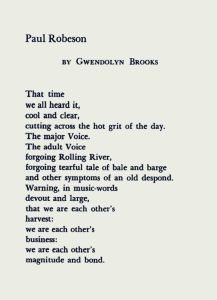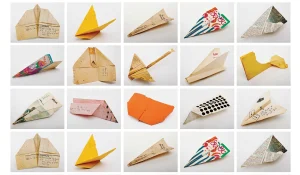2 How to use this guide
How to Use This Guide: Co-creating Learning Communities
This guide emerges from a recognition that we are living between worlds—between traditional educational expectations and the new realities of AI-enhanced learning. It is designed not as a prescriptive manual but as an invitation to dialogue, adaptation, and collective reimagining of what our learning spaces can be when we integrate AI thoughtfully and intentionally.
An Invitation to Co-Construction
The activities and frameworks presented here are starting points, not endpoints. They are meant to be transformed by the specific wisdom, needs, and lived experiences of your unique learning community. As bell hooks reminds us, the classroom is a radical space of possibilities—one that is most vibrant when everyone’s voice contributes to its creation.
I encourage you to:
- Adapt these activities to your specific context, discipline, and student population. The questions that resonate in a psychology classroom may differ from those in sociology, education, or criminology.
- Invite your students into the design process. What questions do they have about AI and knowledge production? What concerns or possibilities do they see? Their perspectives are not supplementary but essential.
- Remain responsive to emergent needs. Some days, the heaviness students carry may require slowing down, creating more space for emotional processing. Other days, their enthusiasm may lead to unexpected and generative directions.
Building Across Differences

The classroom can be a sacred space where we commit to solidarity through difference. This guide aims to honor the diverse perspectives your students bring, creating opportunities for them to:
- Express unique viewpoints while remaining in community with others
- Critically examine how positionality shapes knowledge production
- Experience the mattering of their voice and perspective
- Develop agency in how they engage with AI tools
As Gwendolyn Brooks reminds us, we are “each other’s harvests.” The learning that happens when diverse perspectives encounter one another is irreplaceable—even as AI tools offer new possibilities for knowledge processing and creation.
The Learning Structure
This guide is organized into three main sections:
- Understanding Positionality and Critical Thinking: Theoretical frameworks and key concepts that help students understand how knowledge is positioned and why their unique perspective matters.
- Classroom Activities for Exploring Positionality: Concrete exercises that help students examine how their own positionality shapes their understanding and how AI tools may amplify or challenge that.
- Qualitative Methods and AI Integration: Practical approaches for using qualitative research methods alongside AI tools to enhance rather than replace human meaning-making.
Each section builds upon the previous one, but activities can also stand alone based on your specific needs and time constraints. The guide is intentionally flexible, recognizing that learning rarely follows a linear path.
Joining a Community of Practice
This guide is a living document, one that will grow richer through your engagement with it. I invite you to share your experiences, adaptations, and insights as you implement these approaches in your own learning communities.
- What worked well for your specific context?
- How did you adapt activities to better serve your students?
- What new approaches emerged through collaboration with your students?
- What challenges arose, and how did you navigate them?
Please reach out at dr.emese.ilyes@gmail.com to share your experiences or to connect with others using this guide. Together, we can build a community of educators committed to preserving student voice and agency while thoughtfully integrating AI into our learning spaces.
Final Thoughts on Implementation
Remember that the goal isn’t perfection but presence—creating spaces where students feel truly seen and heard, where their unique perspectives are valued, and where they can develop critical awareness of how technology shapes knowledge production.
Like the paper airplanes activity described below, our classrooms can be places where we bravely yet playfully release the truth carried in our bodies into the shared air between us, and catch someone else’s truth and hold it with reverence. This is the kind of learning community that prepares students not just to use AI tools effectively, but to remain rooted in their own humanity as they do so.
I hope this guide serves as a meaningful companion as you navigate this transformative moment in education alongside your students.
The Paper Airplane Activity: To Build Across Difference

To illustrate the approach of this guide, here is a detailed description of the paper airplane activity mentioned earlier—a simple yet powerful exercise for building community and honoring diverse perspectives:
Purpose
- Create a safe space for authentic expression of feelings and thoughts
- Build community through vulnerability and shared experience
- Honor diverse perspectives without requiring direct confrontation
- Practice holding others’ truths with reverence, even when different from our own
Materials Needed
- Paper (two sheets per participant)
- Pens or pencils
- Optional: soft background music
Time Required
- 30-45 minutes depending on group size
Process
- Individual Reflection (10 minutes)
- Provide each participant with a sheet of paper
- Invite everyone to reflect on a significant topic (e.g., “How do you feel about AI in education?” or “What hopes and concerns do you have about this course?”)
- Ask participants to write freely, emphasizing that this writing is for them alone
- Explain that while no one will read their full reflection, they will be sharing one or two sentences anonymously
- Selecting and Preparing (5 minutes)
- Ask participants to identify one or two sentences from their reflection that they are willing to share
- Invite them to write only these two sentences on their paper
- Guide everyone in folding their papers into airplanes (be prepared to demonstrate for those who need help)
- Creating Community (10-15 minutes)
- Have participants form a circle in an open space
- On a count of three, everyone launches their airplane toward the center
- Each person picks up an airplane (not their own)
- One by one, participants read aloud the two sentences on the airplane they’ve received
- Emphasize listening with reverence—these are gifts of vulnerability from colleagues
- Reflection (10 minutes)
- Invite participants to share observations about common themes, surprising perspectives, or moments that resonated
- Discuss how it felt to have someone else voice your thoughts
- Reflect on how this experience might inform how we engage with different perspectives throughout the course
This activity creates a powerful metaphor: we release our truths into a shared space, where they are caught and held by others. It encourages vulnerability while maintaining psychological safety through anonymity, and it reminds us that community is built not by erasing differences but by honoring them.
Media Attributions
- Paul Robeson by Gwendolyn Brooks
- Photograph by Jason Fulford in the New Yorkers